Theabrownin from Pu-erh tea attenuates hypercholesterolemia via modulation of gut microbiota and bile acid metabolism
- PMID: 31672964
- PMCID: PMC6823360
- DOI: 10.1038/s41467-019-12896-x
Theabrownin from Pu-erh tea attenuates hypercholesterolemia via modulation of gut microbiota and bile acid metabolism
Abstract
Pu-erh tea displays cholesterol-lowering properties, but the underlying mechanism has not been elucidated. Theabrownin is one of the most active and abundant pigments in Pu-erh tea. Here, we show that theabrownin alters the gut microbiota in mice and humans, predominantly suppressing microbes associated with bile-salt hydrolase (BSH) activity. Theabrownin increases the levels of ileal conjugated bile acids (BAs) which, in turn, inhibit the intestinal FXR-FGF15 signaling pathway, resulting in increased hepatic production and fecal excretion of BAs, reduced hepatic cholesterol, and decreased lipogenesis. The inhibition of intestinal FXR-FGF15 signaling is accompanied by increased gene expression of enzymes in the alternative BA synthetic pathway, production of hepatic chenodeoxycholic acid, activation of hepatic FXR, and hepatic lipolysis. Our results shed light into the mechanisms behind the cholesterol- and lipid-lowering effects of Pu-erh tea, and suggest that decreased intestinal BSH microbes and/or decreased FXR-FGF15 signaling may be potential anti-hypercholesterolemia and anti-hyperlipidemia therapies.
Conflict of interest statement
The authors declare no competing interests.
Figures

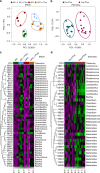
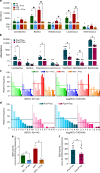
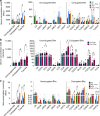
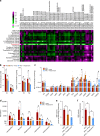

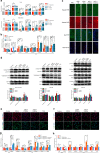

Similar articles
-
Yellow tea polysaccharides protect against non-alcoholic fatty liver disease via regulation of gut microbiota and bile acid metabolism in mice.Phytomedicine. 2024 Oct;133:155919. doi: 10.1016/j.phymed.2024.155919. Epub 2024 Aug 6. Phytomedicine. 2024. PMID: 39153277
-
Anti-diabetic effect of dicaffeoylquinic acids is associated with the modulation of gut microbiota and bile acid metabolism.J Adv Res. 2025 Jun;72:17-35. doi: 10.1016/j.jare.2024.06.027. Epub 2024 Jul 3. J Adv Res. 2025. PMID: 38969095 Free PMC article.
-
Sanye tablet regulates gut microbiota and bile acid metabolism to attenuate hepatic steatosis.J Ethnopharmacol. 2025 Apr 9;345:119514. doi: 10.1016/j.jep.2025.119514. Epub 2025 Feb 17. J Ethnopharmacol. 2025. PMID: 39971018
-
Cross-talk between bile acids and intestinal microbiota in host metabolism and health.J Zhejiang Univ Sci B. 2015 Jun;16(6):436-46. doi: 10.1631/jzus.B1400327. J Zhejiang Univ Sci B. 2015. PMID: 26055905 Free PMC article. Review.
-
Molecular Basis of Bile Acid-FXR-FGF15/19 Signaling Axis.Int J Mol Sci. 2022 May 27;23(11):6046. doi: 10.3390/ijms23116046. Int J Mol Sci. 2022. PMID: 35682726 Free PMC article. Review.
Cited by
-
Nutritional Interventions, Probiotics, Synbiotics and Fecal Microbiota Transplantation in Steatotic Liver Disease : Pediatric Fatty Liver and Probiotics.Adv Exp Med Biol. 2024;1449:113-133. doi: 10.1007/978-3-031-58572-2_7. Adv Exp Med Biol. 2024. PMID: 39060734 Review.
-
The Mechanism of Traditional Chinese Medicine for the Treatment of Obesity.Diabetes Metab Syndr Obes. 2020 Sep 25;13:3371-3381. doi: 10.2147/DMSO.S274534. eCollection 2020. Diabetes Metab Syndr Obes. 2020. PMID: 33061498 Free PMC article. Review.
-
Ganoderma lucidum polysaccharide ameliorates cholesterol gallstone formation by modulating cholesterol and bile acid metabolism in an FXR-dependent manner.Chin Med. 2024 Jan 24;19(1):16. doi: 10.1186/s13020-024-00889-y. Chin Med. 2024. PMID: 38268006 Free PMC article.
-
Protective effects of dioscin against Parkinson's disease via regulating bile acid metabolism through remodeling gut microbiome/GLP-1 signaling.J Pharm Anal. 2023 Oct;13(10):1153-1167. doi: 10.1016/j.jpha.2023.06.007. Epub 2023 Jun 16. J Pharm Anal. 2023. PMID: 38024855 Free PMC article.
-
Starch-protein interaction effects on lipid metabolism and gut microbes in host.Front Nutr. 2022 Nov 16;9:1018026. doi: 10.3389/fnut.2022.1018026. eCollection 2022. Front Nutr. 2022. PMID: 36466418 Free PMC article.
References
-
- Cao ZH, et al. Effect of pu-erh tea on body fat and lipid profiles in rats with diet-induced obesity. Phytother. Res. 2011;25:234–238. - PubMed
Publication types
MeSH terms
Substances
Grants and funding
LinkOut - more resources
Full Text Sources
Medical
Molecular Biology Databases

